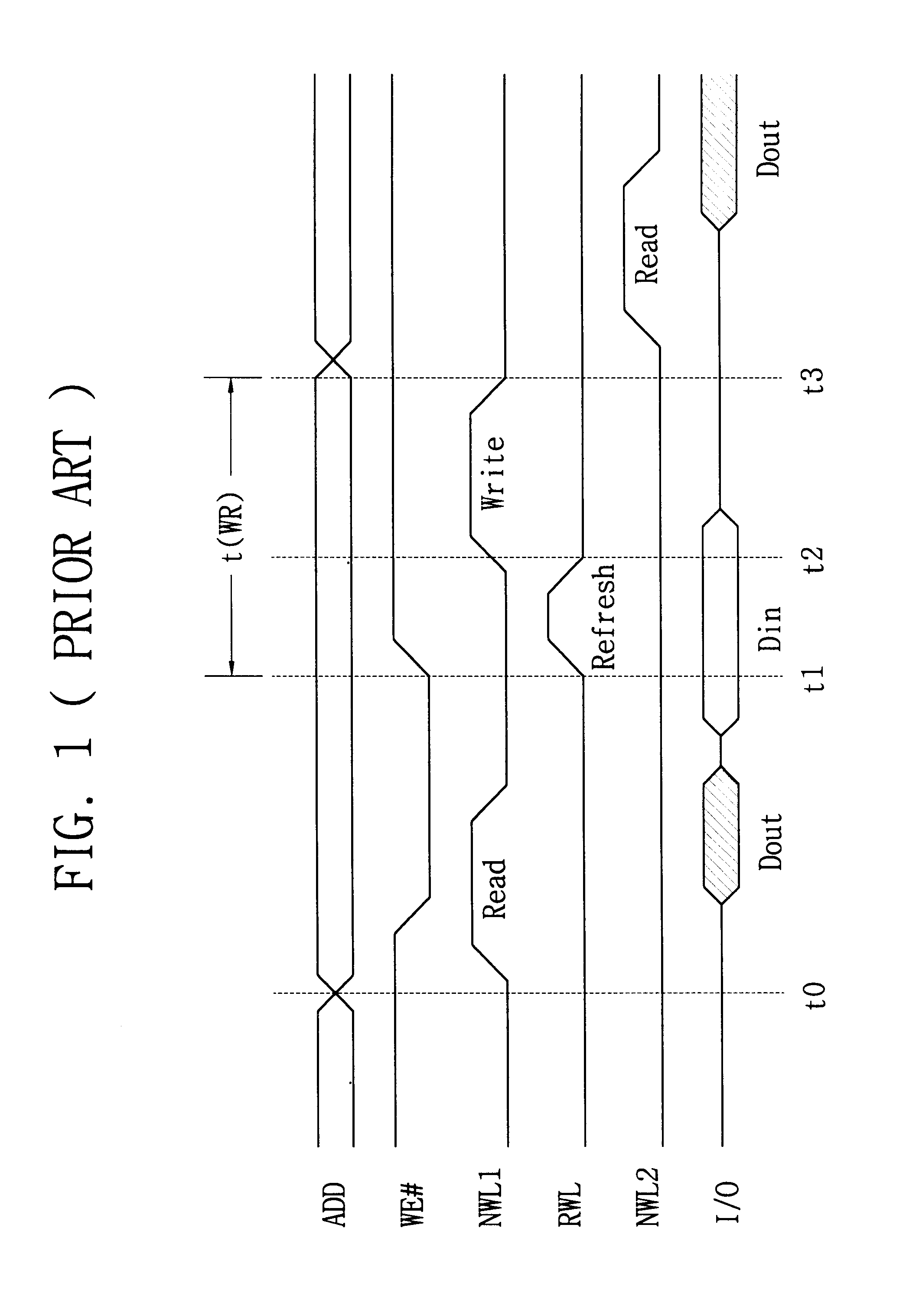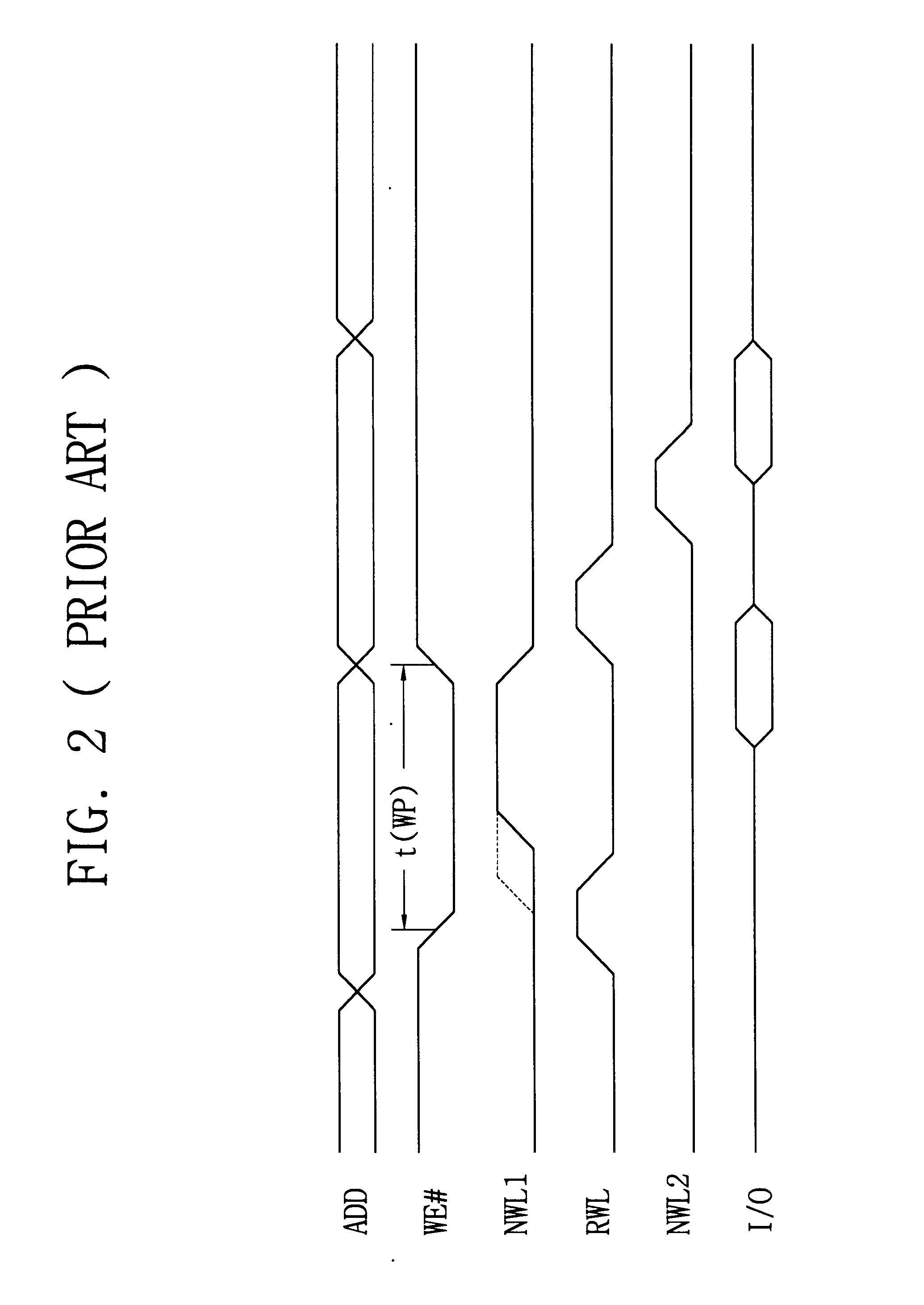Refresh-type memory with zero write recovery time and no maximum cycle time
a memory and write recovery technology, applied in the field of memory devices and methods of semiconductor devices, can solve problems such as data errors, inability to hold data indefinitely, and inability to dram
- Summary
- Abstract
- Description
- Claims
- Application Information
AI Technical Summary
Problems solved by technology
Method used
Image
Examples
Embodiment Construction
In the following description, several terms have defined meanings. A pulsed operation, such as a pulsed read or a pulsed write, refers to an operation that is internally sequenced, as opposed to an operation that begins and ends based upon transitions of an external signal. For example, a pulsed write operation may begin based upon an internal or external start signal, but the operation then proceeds according to internally-generated signals.
A late write refers to an internal pulsed write operation to the memory cell array. The distinguishing feature of a late write is that array address setup and data writing occur at some time after the external write operation during which the address and data were supplied to the device, with the external write address and data stored in temporary registers in the interim. The late write may occur, e.g., during a following external write operation. Another feature of a late write is the possibility that a request to read the data may occur befor...
PUM
 Login to View More
Login to View More Abstract
Description
Claims
Application Information
 Login to View More
Login to View More - R&D
- Intellectual Property
- Life Sciences
- Materials
- Tech Scout
- Unparalleled Data Quality
- Higher Quality Content
- 60% Fewer Hallucinations
Browse by: Latest US Patents, China's latest patents, Technical Efficacy Thesaurus, Application Domain, Technology Topic, Popular Technical Reports.
© 2025 PatSnap. All rights reserved.Legal|Privacy policy|Modern Slavery Act Transparency Statement|Sitemap|About US| Contact US: help@patsnap.com



